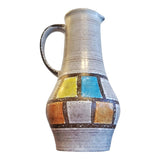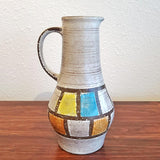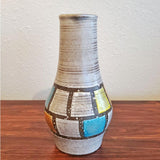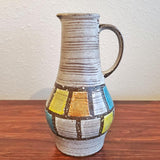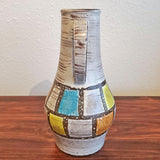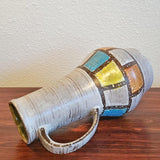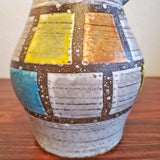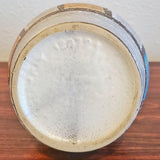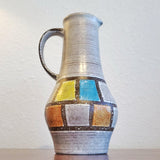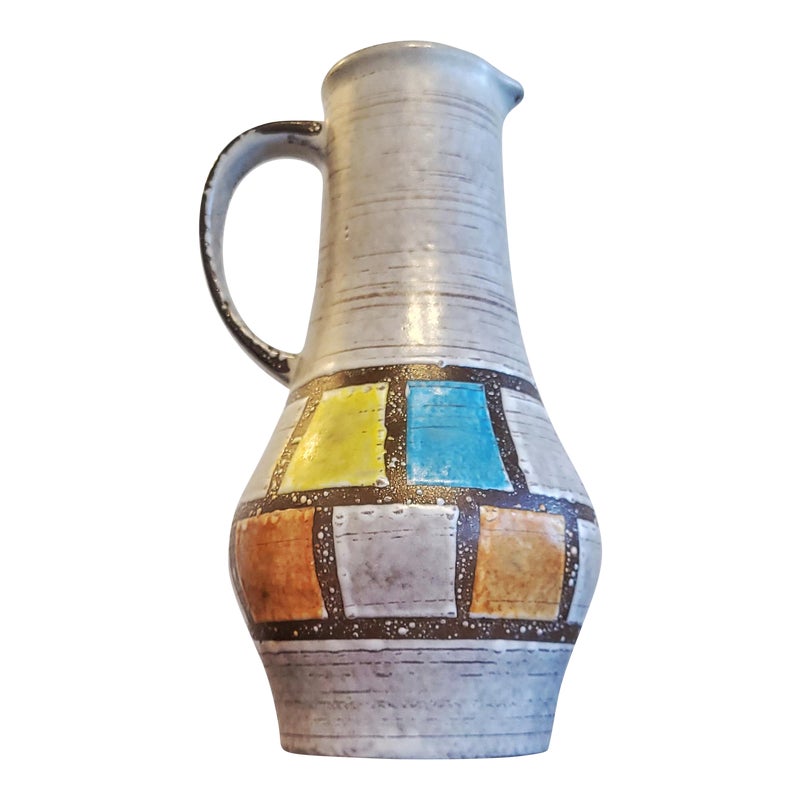
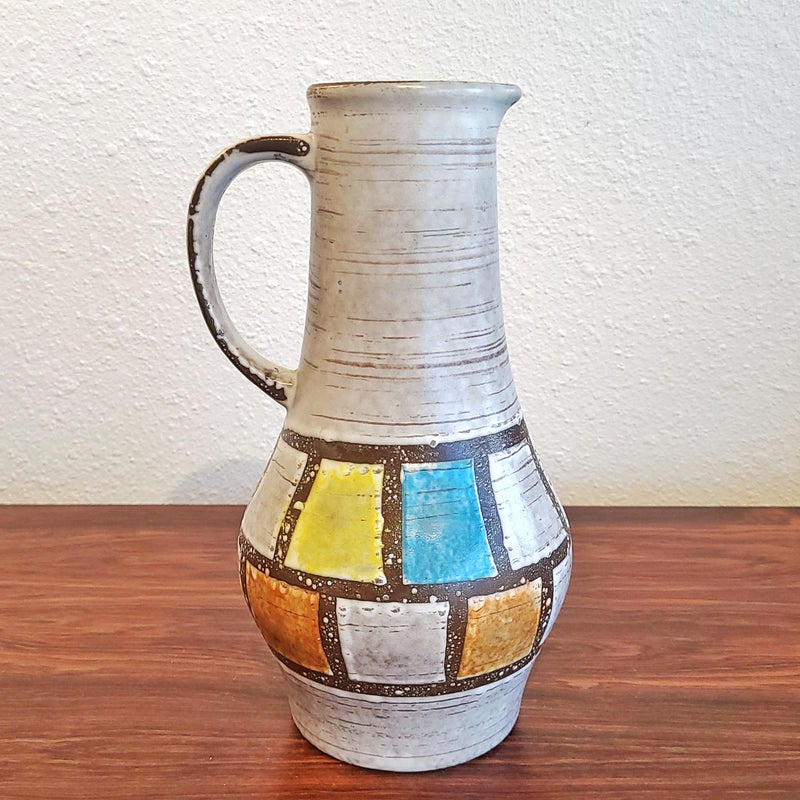
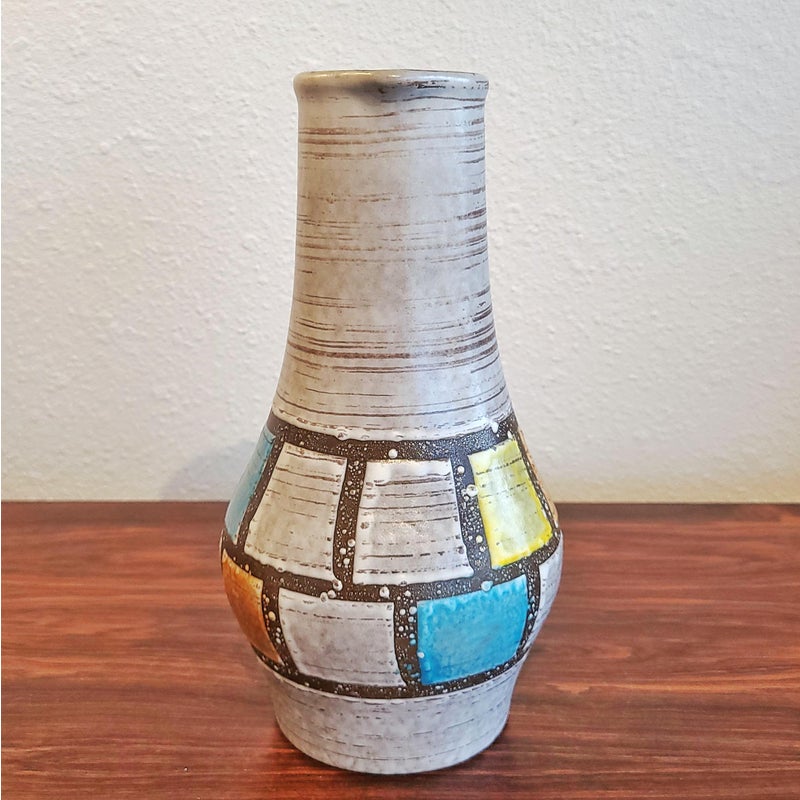
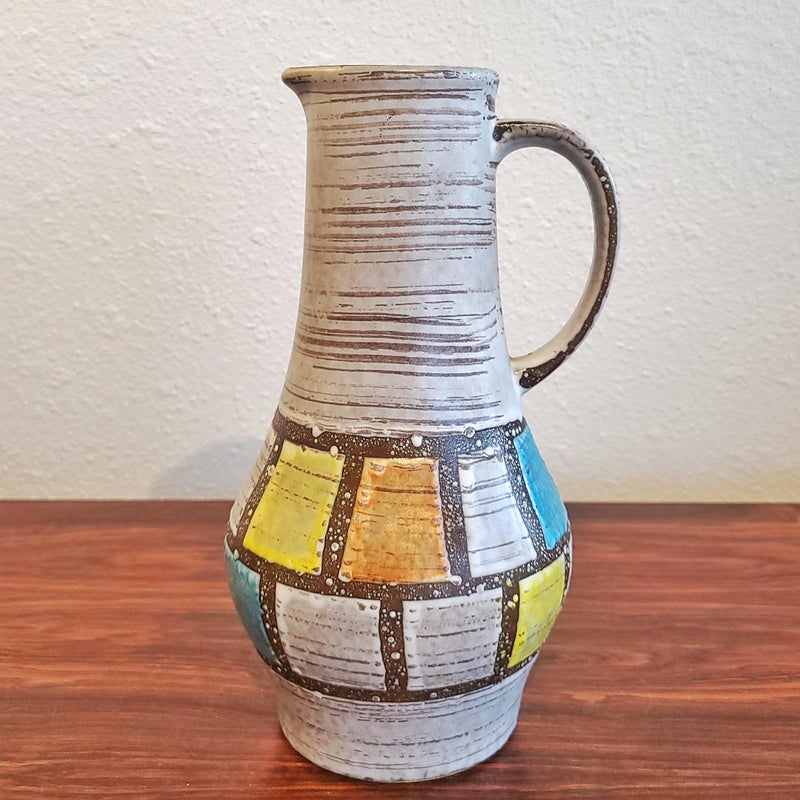
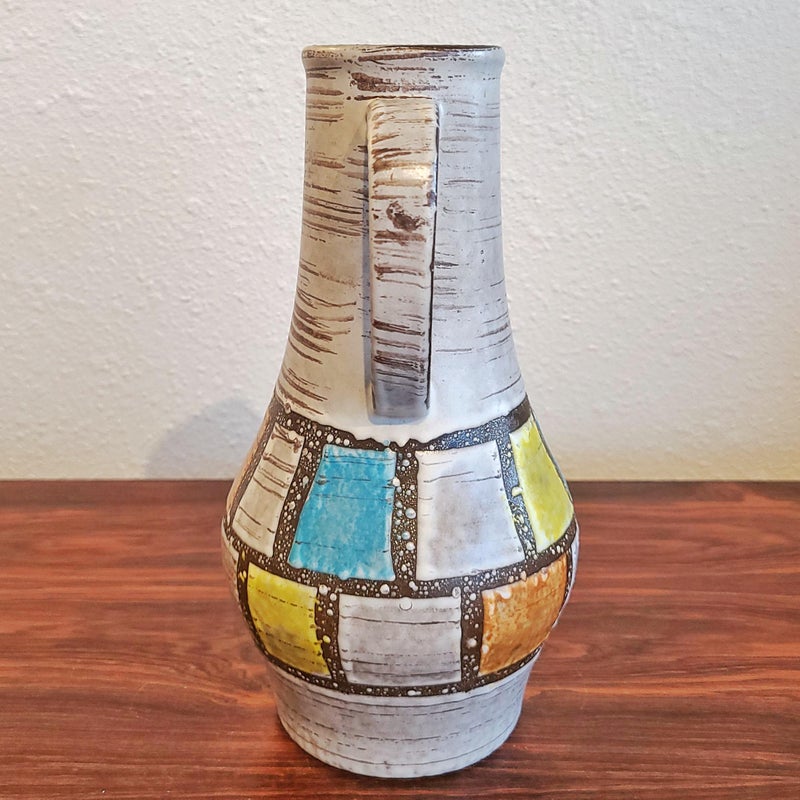
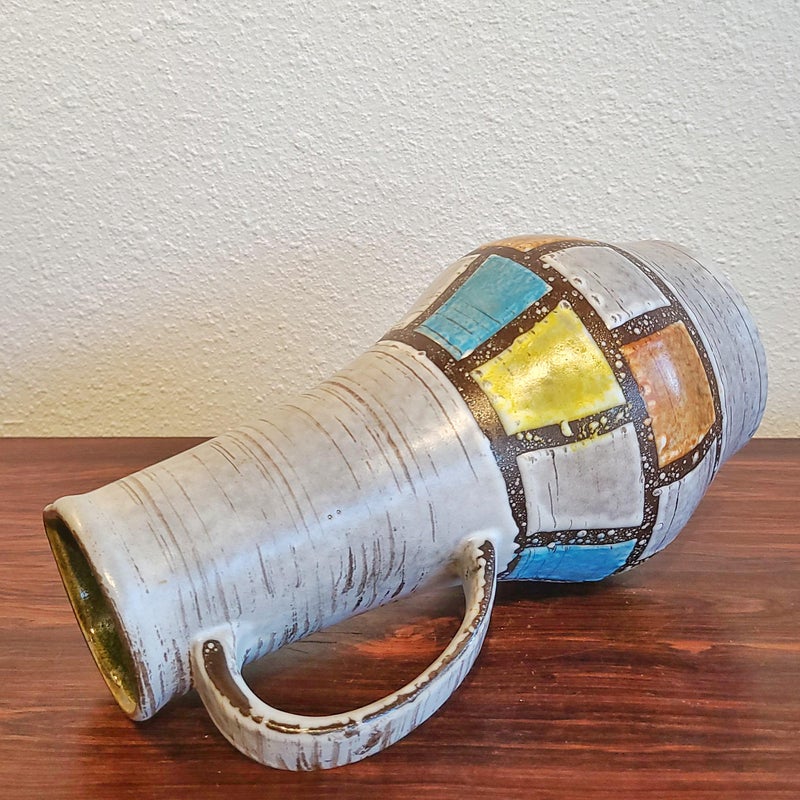
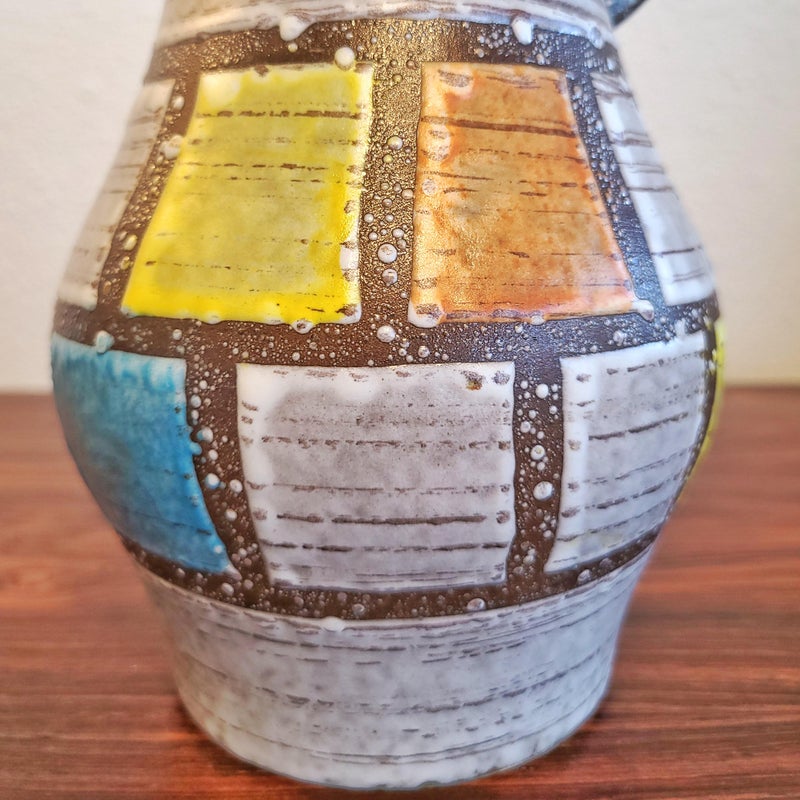
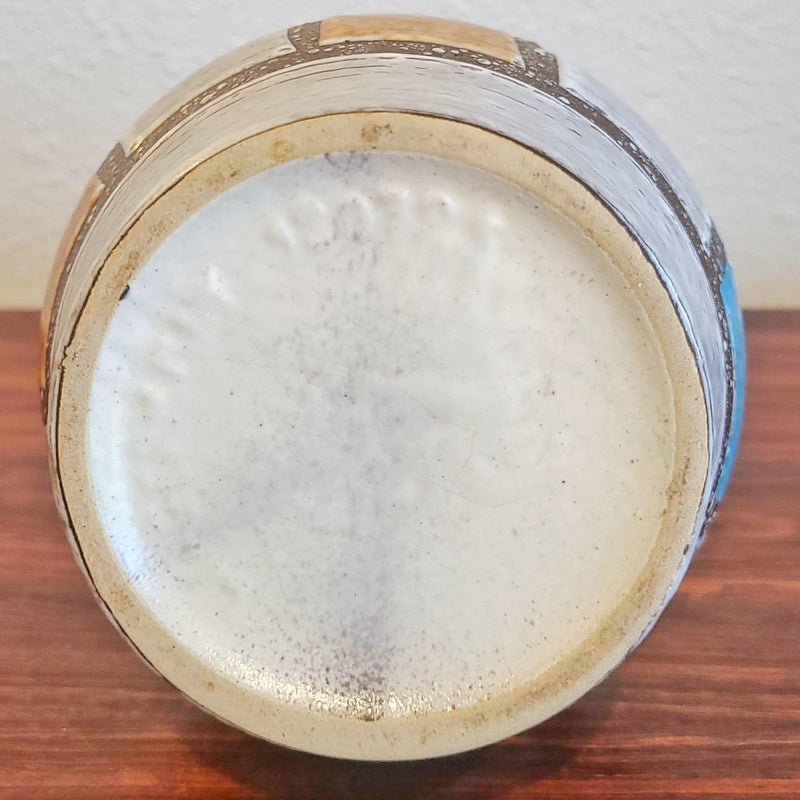
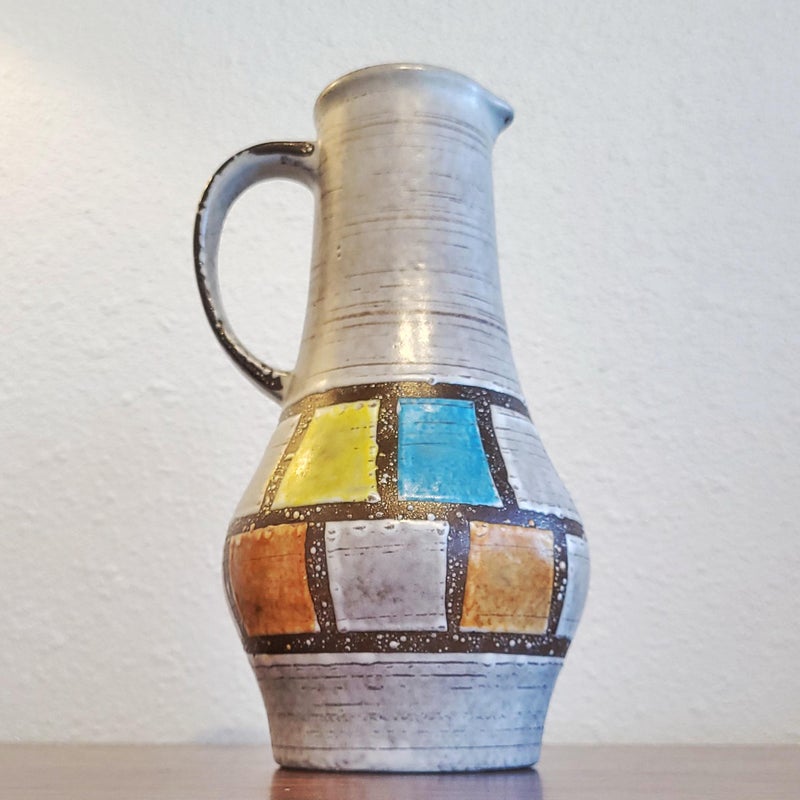
EARLY ’60s JASBA KERAMIK PITCHER VASE Nr. 1207/25
CONTACT US HERE ABOUT THIS ITEM.
A tall and colorful, early '60s pitcher-form vase from JASBA KERAMIK. A dark brown undercoat is topped with a light gray glaze and a wax-resist pattern on the belly divided into colorful squares of yellow, orange, blue, and gray. It is accented top to bottom with brown, horizontal pinstripes.
JASBA KERAMIK was founded by Jakob Schwaderlapp in 1926, in the small, Rheinland community of Baumbach (now incorporated into the town of Ransbach-Baumbach) in the heart of the Kannenbäckerland. The Kannenbäckerland—or potters' land...more literally, jug-bakers' land—is the site of Europe's largest clay deposit and home to a centuries-old tradition of ceramics manufacture. The word "JASBA" is derived from the names of its founder and the town where it was located—Ja(kob) S(chwaderlapp), Ba(umbach). JASBA initially produced earthenware central-heating systems, but as early as 1928, a separate factory was built to accommodate an expansion into terracotta domestic wares—including vases, fruit bowls, and baking dusters. In 1937 glazed ceramics were added to the program.
A major fire interrupted development in 1938, but the factory was quickly rebuilt, and the new buildings were equipped with the latest technology. Unfortunately this was just in time for the outbreak of WWII. For its duration, JASBA was mostly restricted to contract work for the Wehrmacht (the united armed forces of Nazi Germany), but the production of porcelain, stoneware, and ornamental ceramics quickly resumed when the war ended. A steep upward trend followed in the post-war period; the number of employees rose six-fold from eighty in 1948 to 480 by 1955. JASBA grew to be the largest ceramics enterprise in the region, and when the troubled Porzellanfabrik Niederrhein GmbH in Rees became available in 1957, Schwaderlapp made the decision to buy it and convert it to the production of industrial tiles and mosaic wall panels for the building trade. This decision would later prove to be one of his best.
Meanwhile, the range of ornamental ceramics produced at the parent plant continued to expand. The program was limited at first to conventional forms and décors (glaze and pattern combinations), but the introduction of modern forms began cautiously in 1955. The décor Jaspatina was introduced that year, and a year later the very popular "crawl" glaze Cortina was made available. (The latter proved very successful and remained in the production in several color variants until the early 1960s.) At the beginning of 1957, following her stint with Ruscha Keramik, the ceramicist and décor designer Cilli Wörsdörfer joined JASBA. Her colorful, abstract surfaces transformed the previously conventional look of JASBA's ornamental ceramics. She struck a special chord with her décors Tuscany and Verona, and followed them up the following year with Ghana and Karo, all of which are still much sought-after by collectors of JASBA's '50s-era output.
JASBA KERAMIK's immense repertoire was characterized by a great diversity. In 1958 alone, 40 different vase forms were offered in more than 80 sizes and almost 30 different décor variants. In a bid to reach a higher-end market, Schwaderlapp founded JASBA's well-heeled sister company, Ceramano Kunstkeramik W.J. Schwaderlapp KG, in 1959. Ceramano would become a powerhouse in its own right, with the production of high-end, experimental pieces intended to mimic the work of studio potters and to be sold in better department stores and speciality shops throughout Europe.
When she married in 1960, Cilli Wörsdörfer ended her ceramic and artistic activity, and handed over her position at JASBA to Christiane Reuter, whose wide-ranging 1962 series, Bunte Welt der Keramik (Colorful World of Ceramics), introduced cutting-edge stylistic tendencies and brightly colored glazes. JASBA did not produce many "lava" or otherwise highly textured glazes, but they were especially adventurous with shapes and molded patterns. At the end of the 1962 the more typical shapes and decors of the previous decades were retired. Production of vases and other decorative objects began to fall off sharply in the early '70s; by 1981 the focus had shifted exclusively to the company's very successful line of architectural tiles. Jasba Mosaik is still in business today.
DETAILS
Maker – JASBA KERAMIK
Production Period/Year – 1960s
Origin – WEST GERMANY
Styles/Movements – ABSTRACT; BOHO CHIC; MID-CENTURY MODERN
Materials – CERAMIC
Colors – LIGHT GRAY, ORANGE, SKY BLUE, YELLOW
Condition – Excellent vintage condition; no damage. May show some signs of previous use.
Dimensions – 5 ½" W × 6" D × 1" H

